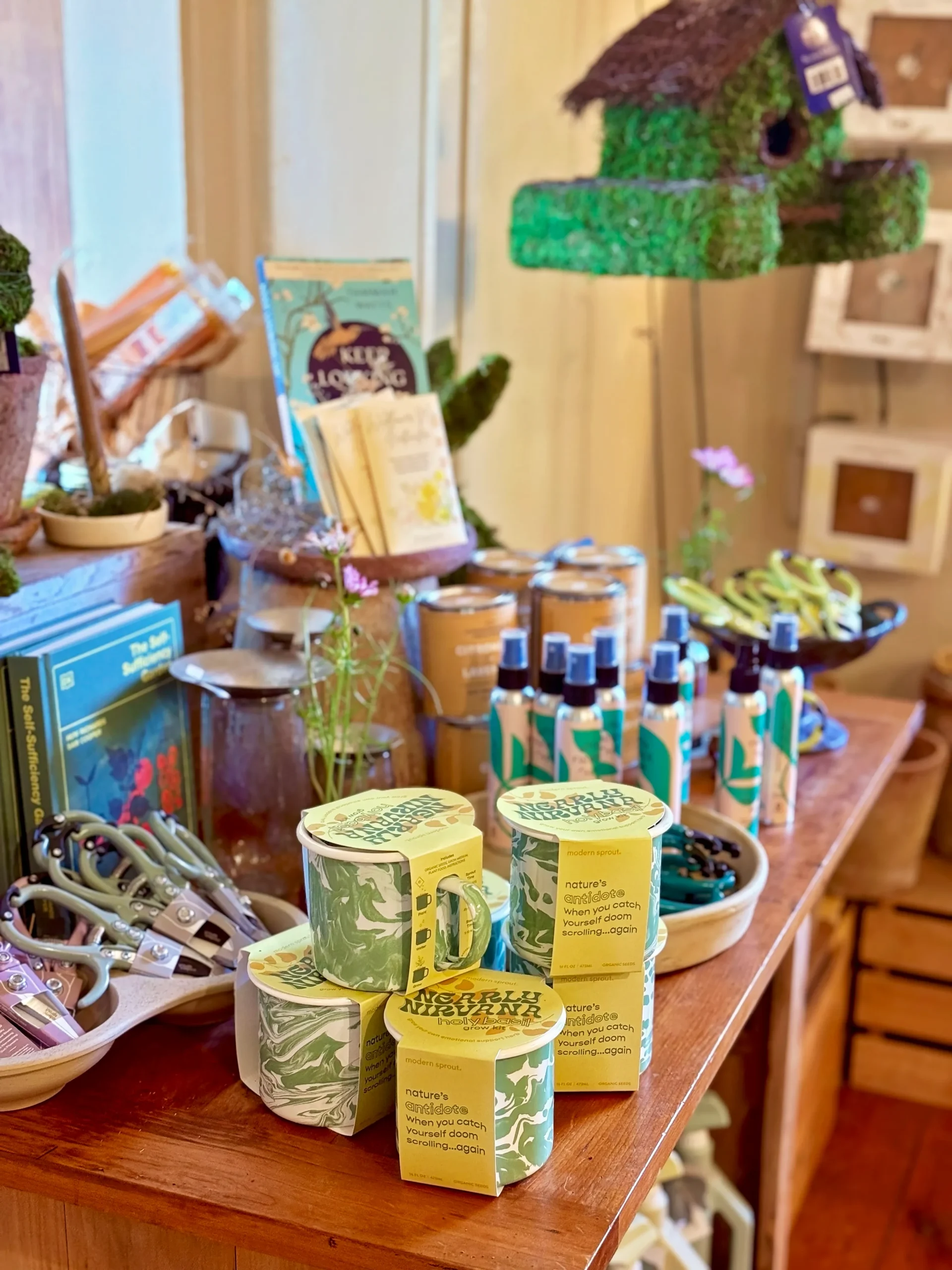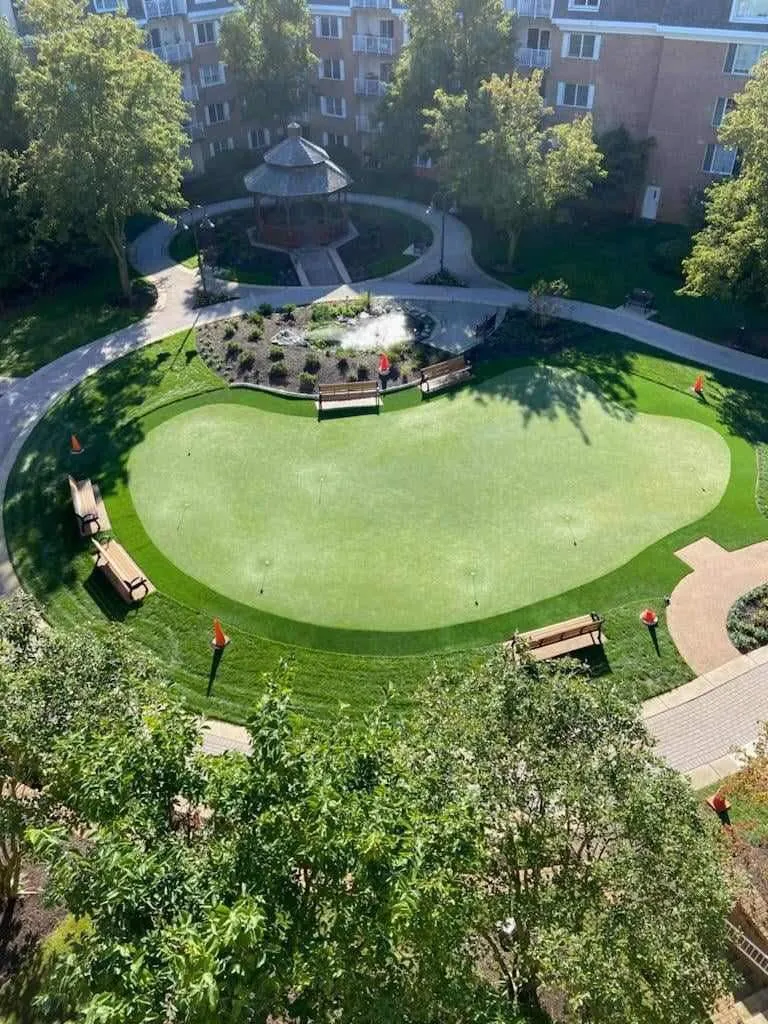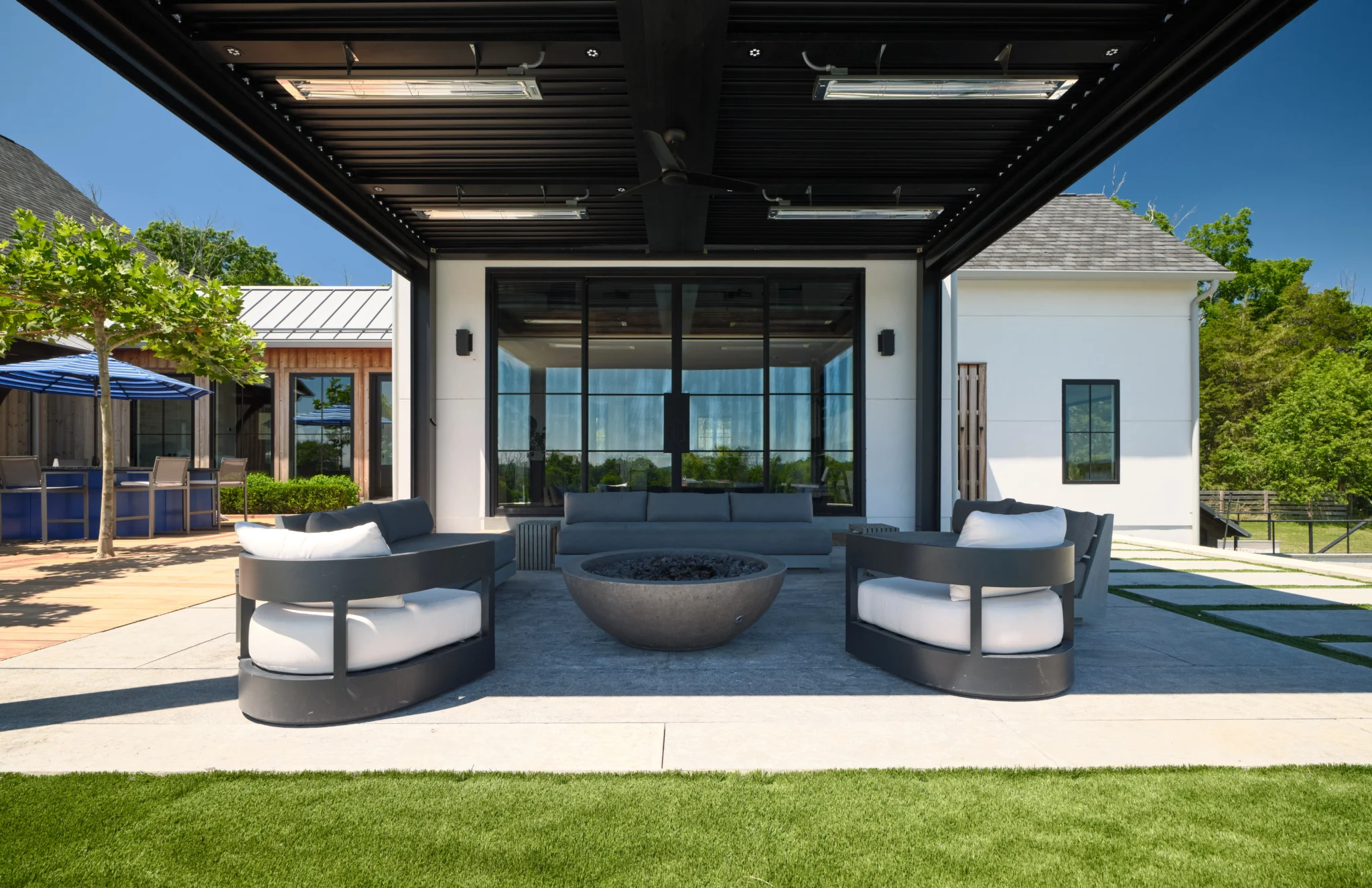This past week, we got a chance to sit down with our partner Jasmin Molina and hear her thoughts on naturalistic planting design, We soaked up her thoughts on PLANT Design Group’s artful designs, how people define their relationship with nature, and the history of perennial planting design. Our conversation was fascinating and inspiring, and we/re excited to invite you in on our conversation.
How did you get connected with PLANT Design Group and Kelly Grow, and why are you excited about the partnership?
You never know when you’ll cross paths with someone who just gets it. Last fall, Chalie Kelly and his wife Sue wandered into my garden and gift shop, Unriven, at Hershberger Heritage Farms. I’d been searching for installation partners I could truly trust. Chalie and I hit it off immediately—what started as friendly conversation turned into a deep dive, swapping stories about “no-mow” meadows, local zoning quirks, and the real nitty gritty of soil prep. I was struck by how in-the-weeds Chalie could get about the practical details—he wasn’t just talking theory, he knew what made a landscape thrive in Bucks County.
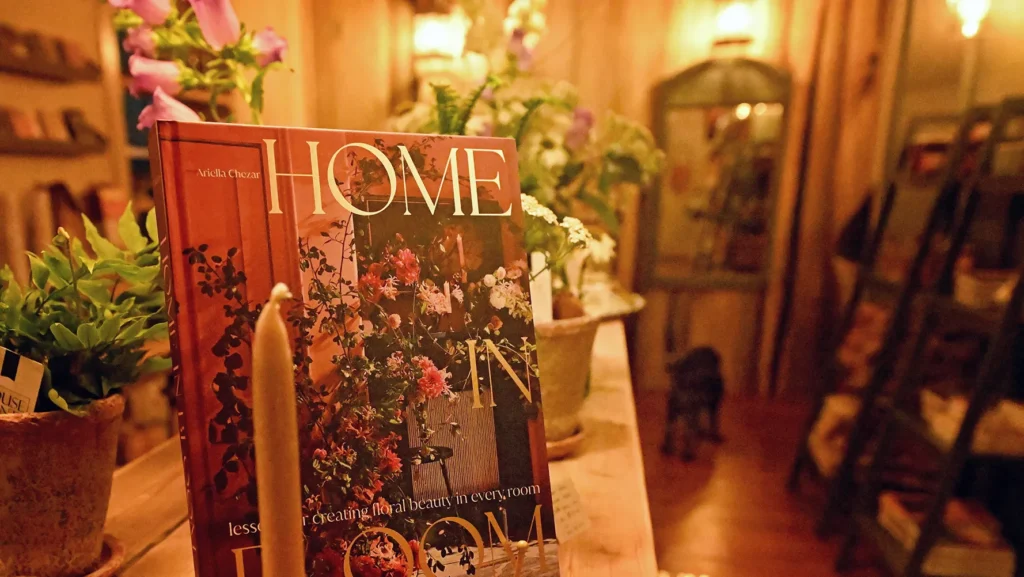
We also had a really interesting moment of serendipity: Chalie’s company, Kelly Grow, was already talking with Plant Design Group—the exact team I’d been planning to reach out to. I’d admired their modern aesthetic and how it felt tailor-made for the kind of naturalistic planting design I practice.
I left that first conversation energized, knowing I’d found collaborators who speak the same language—people who care about both the heart and the science of what makes a landscape sing. Sometimes you just know when you’re onto something good, and this partnership felt like one of those moments where possibility takes root.
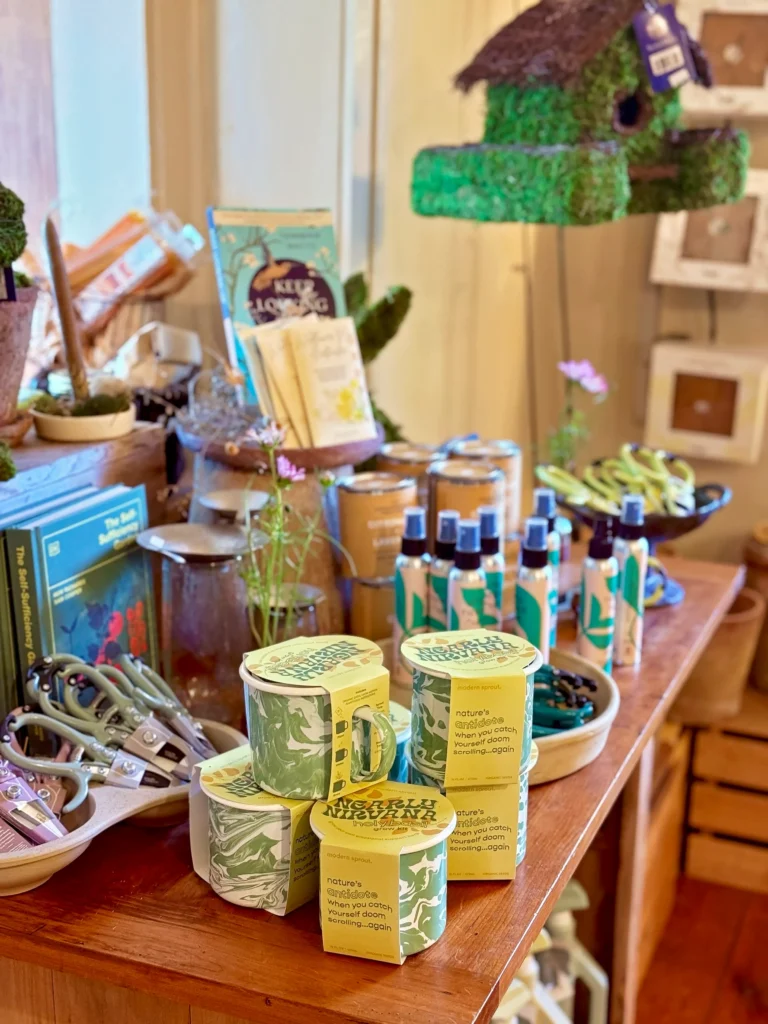
What excites you about PLANT’s designs, from an artistic perspective?
PLANT’s work feels thoughtfully attuned to its environment—capturing a property’s sense of place. There’s a deep listening that has clearly occurred. Closer to the homes’, you’ll notice clarity—defined shapes, elegant patios, structured moments. But as the eye moves outward, the planting relaxes. You’re drawn into layered plantings and grasses that shift romantically with the seasons. It’s this balance—between permanence and change—that makes PLANT’s designs so artful. They give us places to dwell, then invite us to wander. Working with them means partnering with a team that understands not just design, but the emotive and ecological aspects of how we enjoy nature.
I can tell this team is up for innovating into the next ideation of garden leisure spaces.
What does being a new-perennialist mean to you?
To me, new-perennialists seek to redefine our relationship with nature. Emerging in the late 20th century through designers like Piet Oudolf and Noel Kingsbury, the movement shifted focus from rigid order often dominated by plantings that would need to be replanted year after year, to dynamic, ecologically inspired plantings.
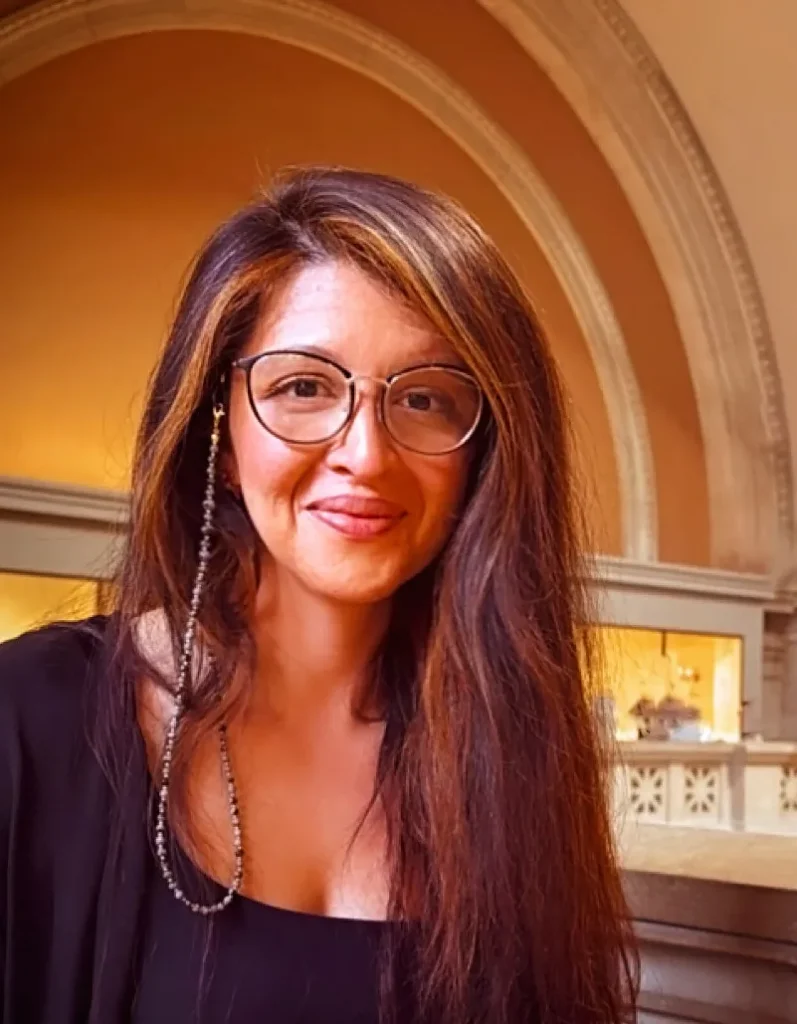
New perennialists craft enduring, harmonious plantings that embody our intrinsic need for environmental connection and inspiration.
It’s about fostering this ongoing dialogue between people and the natural world, inviting us to co-create spaces that feel both wild and welcoming, resilient and deeply personal.
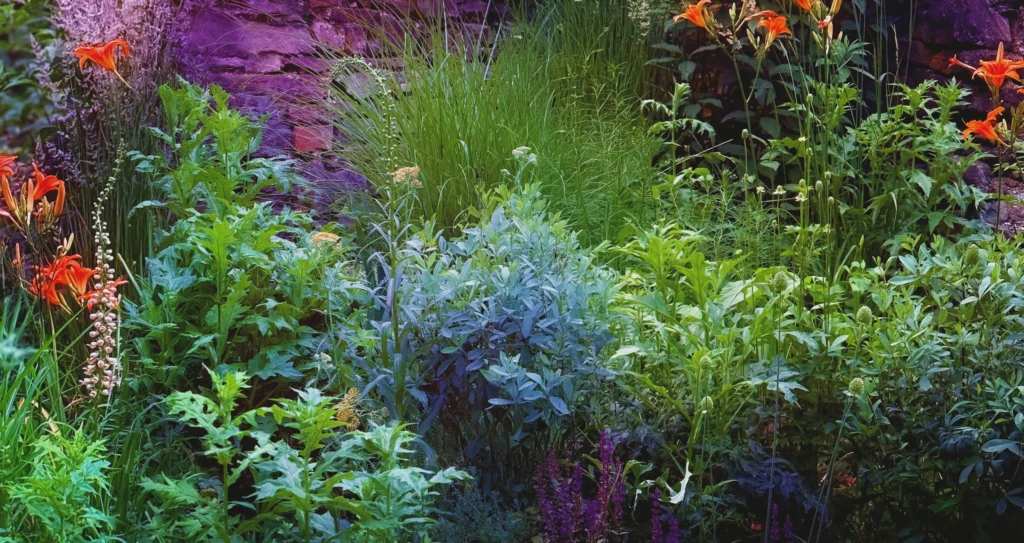
What do you think should excite potential clients about your work and take on landscapes and hardscapes, practically speaking, and from a design perspective?
Clients are often excited by the idea that a garden or landscape can be truly dynamic—a living canvas, vibrant with biodiversity and offering something new each time you step outside. My approach is about creating plantings that are not only visually stunning, but also resilient and beneficial for wildlife. I use ecological principles to design communities of plants that look after themselves, meaning less maintenance and greater long-term beauty and stability.
From a design perspective, I love pairing clean, intentional hardscaping with soft, meadow-like plantings—creating gardens that feel both grounded and free.
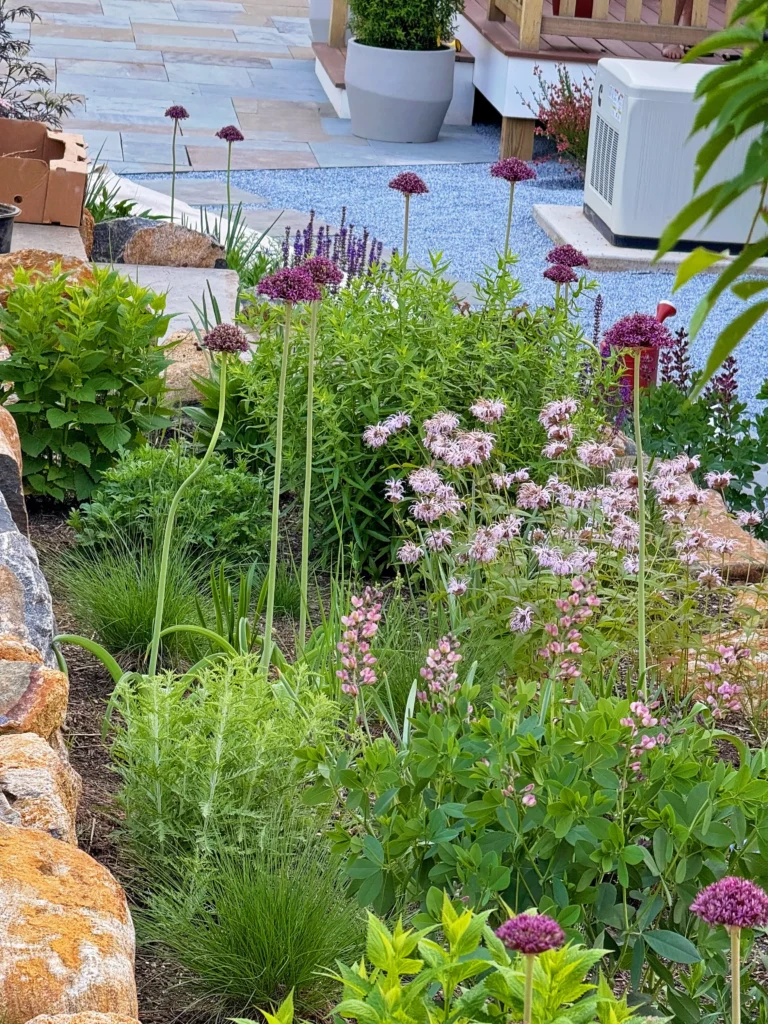
Structure lends interest. Special care was taken to ensure standing foliage and spent blooms of these spring lovelies would lend aesthetic appeal in later months.
When done well, this contrast almost gives us permission to welcome these dense naturalist plantings into our environment. The geometry holds the space, gives us a place to dwell, and then the garden carries us outward into something more mysterious and ever-changing. These are gardens that hold us close and then invite us out—to feel the seasons, infused with texture, color, and structure. We see time made sensory: in the jewel tones of spring, and in the soothing rush of wind through summer grasses.
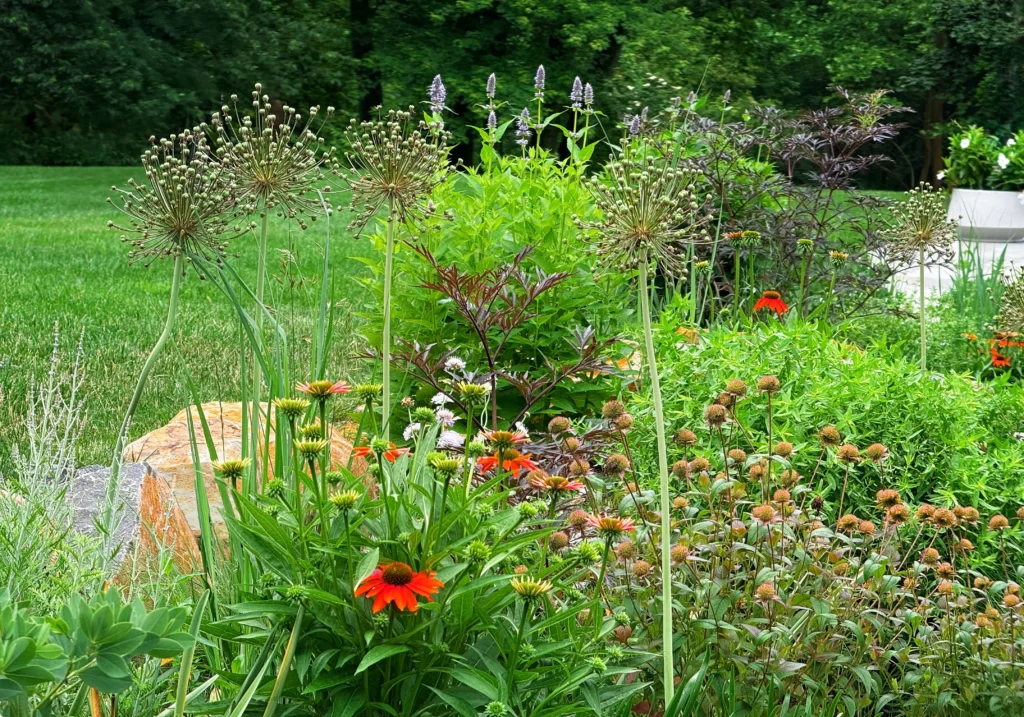
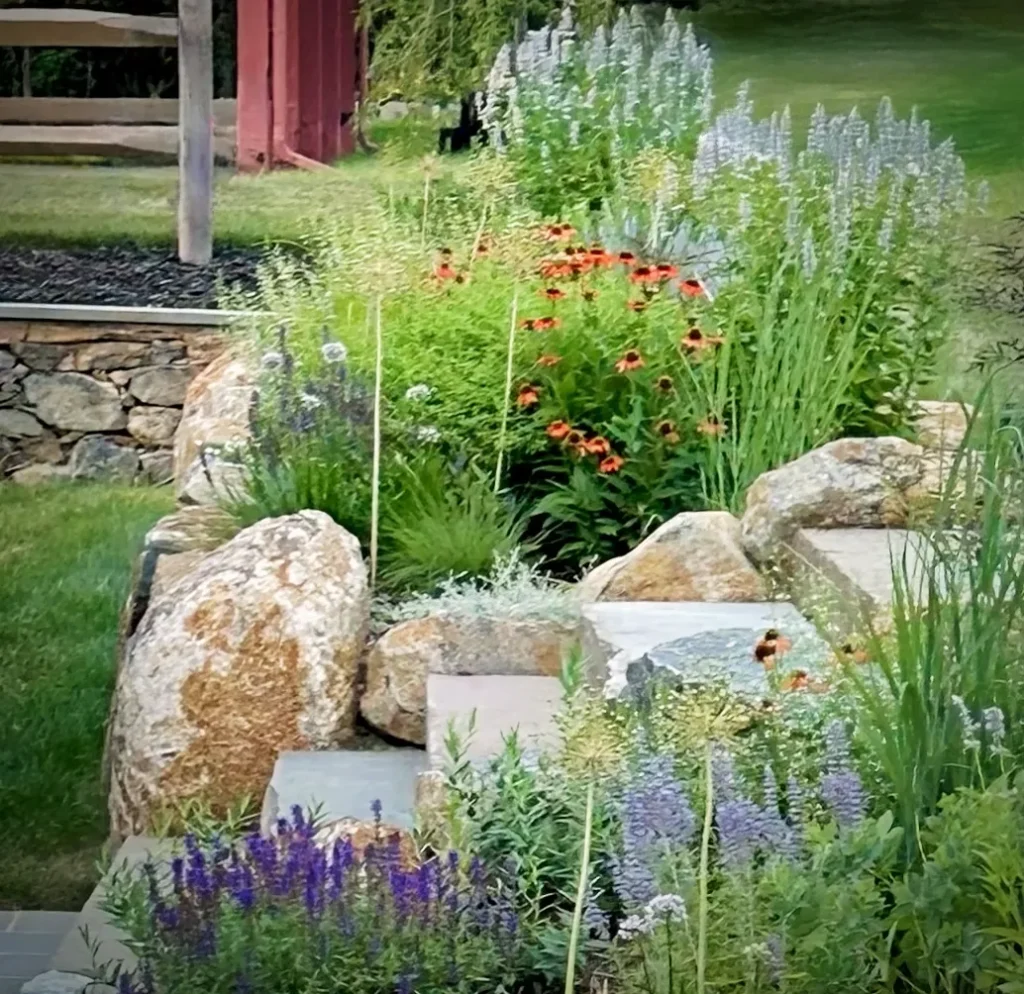
Ultimately, I want clients to feel the excitement of being part of a new kind of landscape—a living, evolving system. It’s about the joy of discovery, the richness of life, and the sense that your garden is contributing to a larger ecological story. That is what makes this work so rewarding, and why clients should feel inspired by what we can create together.
How would you describe your work and style?
Gardening for me is one part meditative practice, one part creating spaces for loved ones to gather and celebrate each other. My philosophy is, if we can truly appreciate these spaces as valued extensions of our home; we’re going about fostering environmental stewardship in the most natural way. Through authentic appreciation and connection.
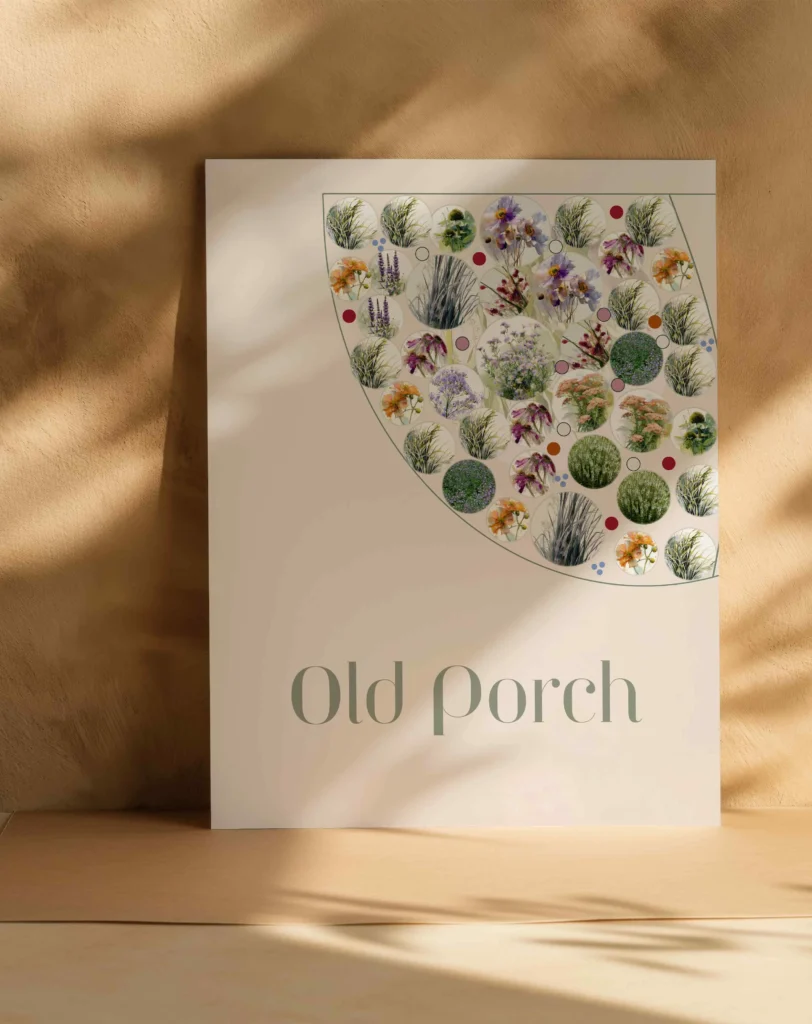
I grew up playing in my mother and grandmother’s gardens—both immigrants from Myanmar. They were so happy to carve out time to get into a pair of old jeans and into the garden. They had a subtle genius for blending worlds: making native plantings feel exotic and new, and weaving truly unusual, vibrant plants seamlessly into the tapestry of what might otherwise be described as an English cottage garden. Those gardens most definitely tailor my eye.
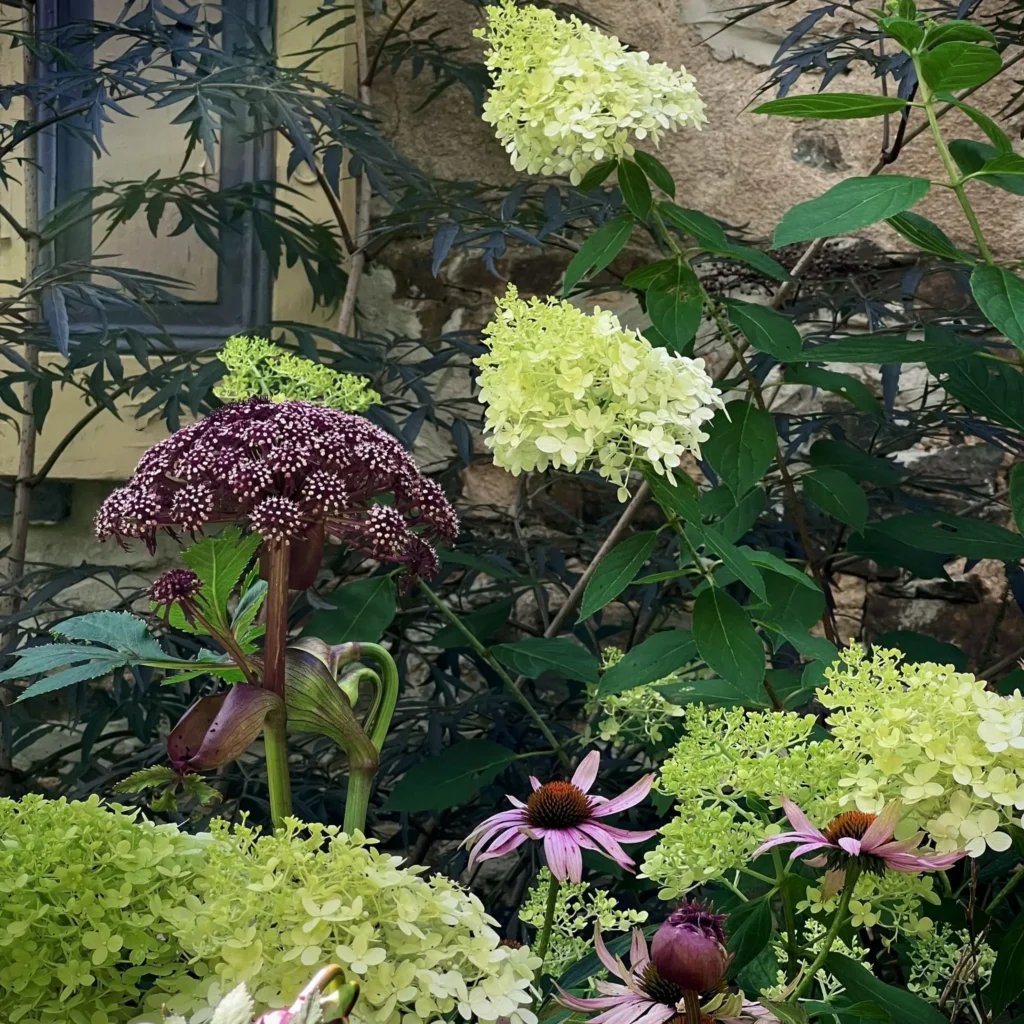
I’ve had a great mash-up of highly technical, artistic, and project-oriented professional roles, and that is reflected in how I collaborate with clients. My garden design style can be deeply technical on the back-end from an ecological perspective. Approaching the longevity of planting communities with a systems-integration mindset.
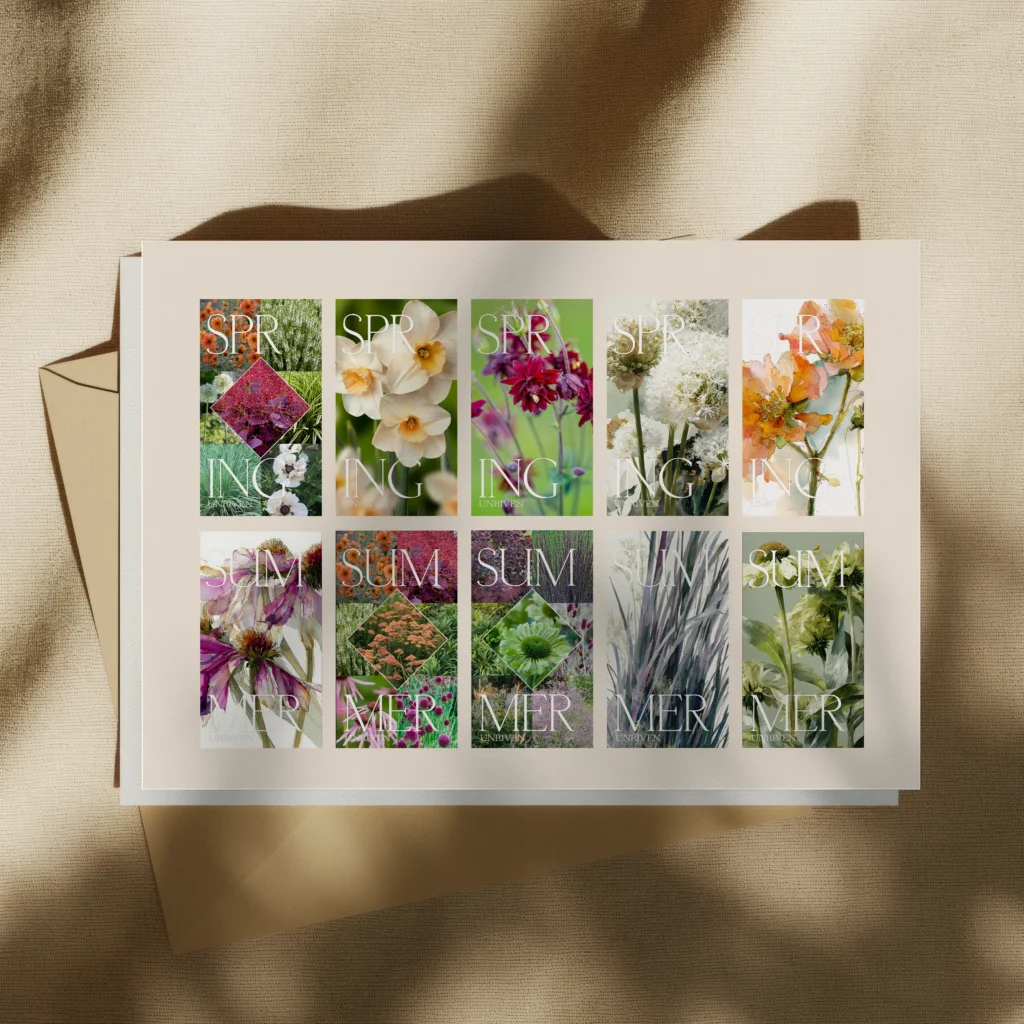
Working with clients, I’m listening and connecting as an artist and often, a friend. I love learning what lights people up, what brings them joy.
I like to use seasonal bloom vignettes as a powerful tool to articulate and foster a shared vision among stakeholders. By meticulously curating floral arrangements that reflect the current season, I can effectively convey the intended aesthetic, mood, and thematic elements of a project. These vignettes serve as tangible representations of abstract concepts, making it easier for clients and collaborators to visualize the final outcome. Furthermore, the inherent beauty and ephemeral nature of seasonal blooms add a layer of depth and emotional resonance to the design narrative, ensuring that the concept resonates on a deeper, more intuitive level.
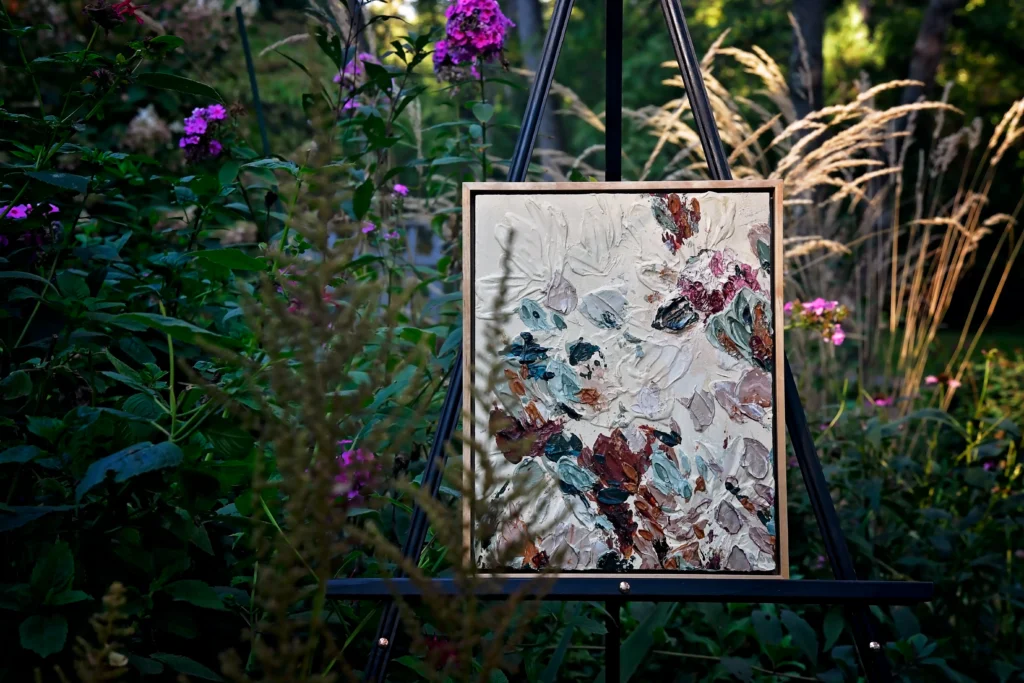
I like to sit and observe where people naturally gravitate. I consider the sight lines and then envision those views as sculptural plantings, much like an impasto painting that can be experienced and appreciated. By layering these observations into the design process, I strive to make every view feel intentional and immersive.
There is something uniquely soothing and healing about a meadow. You stop thinking about mulch and weeds, and start noticing goldfinches swaying like dancers in pursuit of seeds, and the play of golden light as it dances off living sculptures. It’s truly astounding how much natural plantings can create living sanctuaries that enrich our lives.

